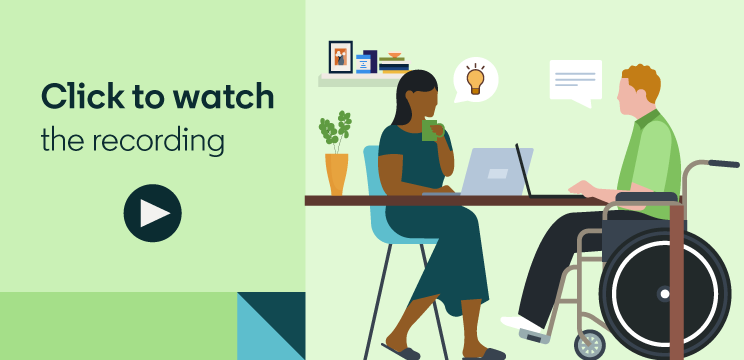
AI for Nonprofits: Resources for Getting Started
AI is top of mind for many organizations, with 75% of knowledge workers already using AI at work today. That’s according to a joint report from Microsoft and LinkedIn, which also found that the majority of users say AI helps them save time (90%), focus on their most important work (85%), and enjoy their work more (83%).
This may have an especially big impact on resource-constrained nonprofits. But while many employees are exploring AI on an individual level, fewer organizations have put a formal AI adoption framework in place.
To help you get started at your organization, we recently hosted a webinar exploring how nonprofits can reimagine their productivity with AI. Here are top tips from the webinar, as well as some free resources to guide you on your AI journey.
Reimagine productivity at your nonprofit with AI
We know getting started with AI might seem intimidating when time and resources are tight. How can you be sure your initial time investment is going to pay off?
We discussed this topic in our webinar “AI for nonprofits: Reimagining productivity with AI,” which is available to watch any time on LinkedIn.
“When there was a time saving of 11 minutes a day utilizing AI in some capacity — content generation, meeting summarization, whatever might be the case — a time saving of 11 minutes a day over 11 weeks, that was the tipping point,” says Devi Thomas, Global Lead for Engagement and Experiences for AI Skills at Microsoft Philanthropies, citing a Microsoft Worklab study. “That was the moment where people first started to see the effects of AI. They saw greater work-life balance, they saw that there was so much more improvement and work enjoyment because they were really able to focus on the tasks that matter. They got some time back in their day.”
Devi calls this the 11X11 tipping point. Reaching it can help free up more time for you and your team to spend on your most strategic, fulfilling tasks.
What steps can you take to start saving 11 minutes a day with the help of AI? Jannett Handy, Vice President of Talent Management & Employee Experience at Boys & Girls Clubs of America, shares a few ways that she began incorporating AI tools into her day-to-day work.
“I realized that I was really starting to use it more to bounce ideas off of,” Jannett says, referring to AI as her thought partner. “I was speaking to it as if I was speaking to a colleague. I would give prompts like ‘help me understand X,’ or ‘I’m working on X — here’s what I have so far, what do you think? Where do you think I should lean in more? What do you think is missing? How do you think I could think about this differently?’”
Jannett finds it especially helpful that AI tools will often explain their reasoning, allowing her to think outside the box of her own experience and consider other approaches.
“I also started to have it help me analyze huge amounts of data,” she says. “For example, I would ask it: ‘Here is the survey data — give me three categories with the top three comments from it, and then give me some thoughts.’ And it would give me exactly that.”
“And [you can] ask the question in natural language,” Devi enthuses. “Remember, the best thing about natural language is that you don’t have to know a formula, you don’t have to be a techie. You can just ask any question in your language… That’s huge.”
Explore free AI resources for nonprofits
When it comes to AI, you don’t have to go it alone. There are lots of free resources out there to help you build key skills, develop internal AI policies, and learn from what other organizations are doing.
As you start weaving AI into your daily workflow, here are some resources you may find helpful.
Find your roadmap.
AI implementation is easier with a clear and actionable roadmap to guide you. That’s why Microsoft sponsored The AI Governance Framework for Nonprofits, a downloadable, community-led toolkit created by AI advisor Afua Bruce, author of The Tech that Comes Next, founder and principal of ANB Advisory Group, and faculty member at Carnegie Mellon University.
In the toolkit, you’ll find resources like:
Internal AI policy templates
Real-world use cases
- Materials for board discussions
Develop in-demand AI skills.
Build the skills you need to apply generative AI in your career. Check out these five LinkedIn Learning paths curated by Microsoft and LinkedIn, which you can watch for free through 2025:
As you start incorporating AI into your daily work, your human skills will become more valuable than ever. With AI taking repetitive tasks off your plate, you’ll have more time to dedicate to innovation, collaboration, and other work that benefits from a uniquely human touch. To help you lean in, check out our permanently unlocked course “Investing in Human Skills in the Age of AI,” led by LinkedIn’s Chief Economic Opportunity Officer, Aneesh Raman. We’ve also created six new Learning Paths covering communication, decision-making, critical thinking, adaptability, creativity, and emotional intelligence, which you can access for free through December 31, 2024.
Find more opportunities to learn with Microsoft’s new AI Skills Navigator, a free AI-assisted platform that helps you identify your goals, level, and learning style to find the right path to AI success for you.
Get started with AI at your nonprofit today
AI holds a lot of potential for nonprofits. Taking a collaborative approach and utilizing all the resources available can help your organization get the most out of this technology — and take your team’s productivity to new heights.
Ready to take the next step in your AI journey? Learn how to harness the power of AI-assisted features in hiring and fundraising products from LinkedIn.


